Overview
The article presents nine habitat-friendly development strategies designed to promote sustainability in construction and urban planning. These strategies encompass a range of approaches, including:
- The incorporation of native vegetation
- The establishment of wildlife corridors
- The implementation of sustainable water management practices
Collectively, these initiatives aim to enhance biodiversity, protect local ecosystems, and foster community engagement, all while effectively addressing the environmental impacts associated with development projects.
Introduction
The intersection of development and environmental stewardship is more critical than ever as urban areas expand and ecosystems confront unprecedented challenges. This article explores nine impactful strategies for habitat-friendly development that prioritize ecological integrity while fostering sustainable community growth.
What are the most effective methods for balancing infrastructure needs with the preservation of local ecosystems? How can developers implement these strategies to ensure long-term benefits?
Addressing these questions unveils a pathway toward responsible development that harmonizes human progress with nature's resilience.
Harbinger Land | Comprehensive Solutions for Habitat-Friendly Land Acquisition
Harbinger Land stands at the forefront of addressing the complexities associated with habitat-friendly development strategies, particularly in infrastructure and utility projects. The challenges of land acquisition, including legal and regulatory hurdles, are significant. However, Harbinger Land offers comprehensive solutions that encompass:
- Site and right-of-way acquisition
- Title research
- GIS mapping
- Data processing
By leveraging advanced technology, such as AI-powered title research software, they incorporate habitat-friendly development strategies to streamline land acquisition processes, ensuring both efficiency and environmental responsibility.
This commitment to habitat-friendly development strategies is essential for meeting the diverse needs of clients, including natural gas companies, solar developers, and municipalities, while prioritizing the protection of local ecosystems. As Donnel Baird articulates, the green resources sector holds the promise to uplift historically disenfranchised communities, underscoring the broader impact of sustainable practices. Furthermore, the economic advantages of renewable energy, highlighted by various thought leaders, reinforce the necessity of adopting habitat-friendly development strategies in land acquisition.
In conclusion, as the demand for sustainable solutions grows, Harbinger Land is poised to lead the way in effective land acquisition that not only meets regulatory requirements but also implements habitat-friendly development strategies and promotes community development.
Incorporate Native Vegetation: Enhance Biodiversity in Development
Incorporating native plants into construction efforts is essential for enhancing local biodiversity and addressing common urban challenges, such as the lack of nesting sites, deficiencies in trophic resources, and imbalanced biological communities. Native plants provide critical habitats for wildlife, support pollinators, and require significantly less water and maintenance compared to non-native species. By implementing habitat-friendly development strategies that prioritize native flora, developers can create landscapes that are visually appealing and ecologically beneficial, fostering a healthier environment for both wildlife and humans.
Successful initiatives, such as those highlighted in the case study 'Transforming Urban Green Areas into Biodiversity-Friendly Spaces,' demonstrate that the integration of native plants leads to thriving ecosystems and strengthens the resilience of urban green spaces. This strategy aligns with three fundamental ecological pillars:
- establishment (planting/nesting)
- resource acquisition (feeding)
- the diversity of ecosystem levels
Furthermore, adopting native vegetation is a key aspect of habitat-friendly development strategies that enhance the overall sustainability of community enhancement initiatives.
To effectively implement this approach, developers should conduct site assessments to identify appropriate native species and collaborate with local ecological experts to ensure the successful incorporation of these plants into their projects. This proactive strategy not only addresses immediate environmental concerns through habitat-friendly development strategies but also sets the foundation for long-term ecological health and community well-being.
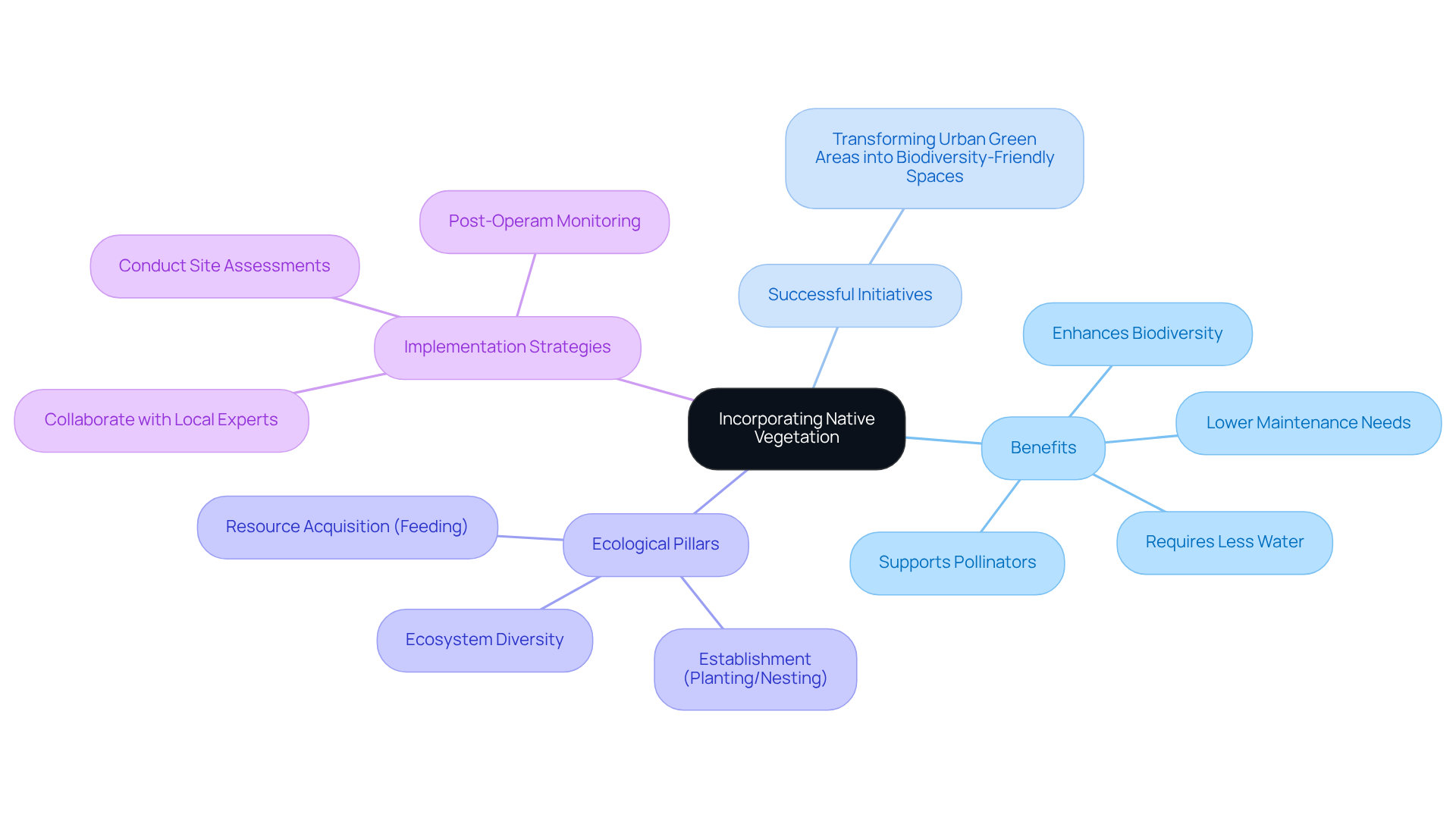
Establish Wildlife Corridors: Promote Safe Animal Movement
Establishing wildlife corridors is essential for facilitating safe animal movement and preserving biodiversity. These corridors act as vital lifelines, connecting fragmented habitats and allowing wildlife to access critical resources such as food, mates, and shelter.
The integration of habitat-friendly development strategies, including wildlife corridors, into urban planning can significantly mitigate the adverse effects of urbanization and infrastructure expansion, thereby fostering resilient ecosystems.
Successful initiatives demonstrate that well-planned corridors not only enhance biodiversity but also promote ecological connectivity, enabling species to thrive despite the challenges posed by human activities.
As urban areas continue to expand, the urgency for these corridors escalates, underscoring the necessity of habitat-friendly development strategies in infrastructure planning to protect wildlife and their habitats.
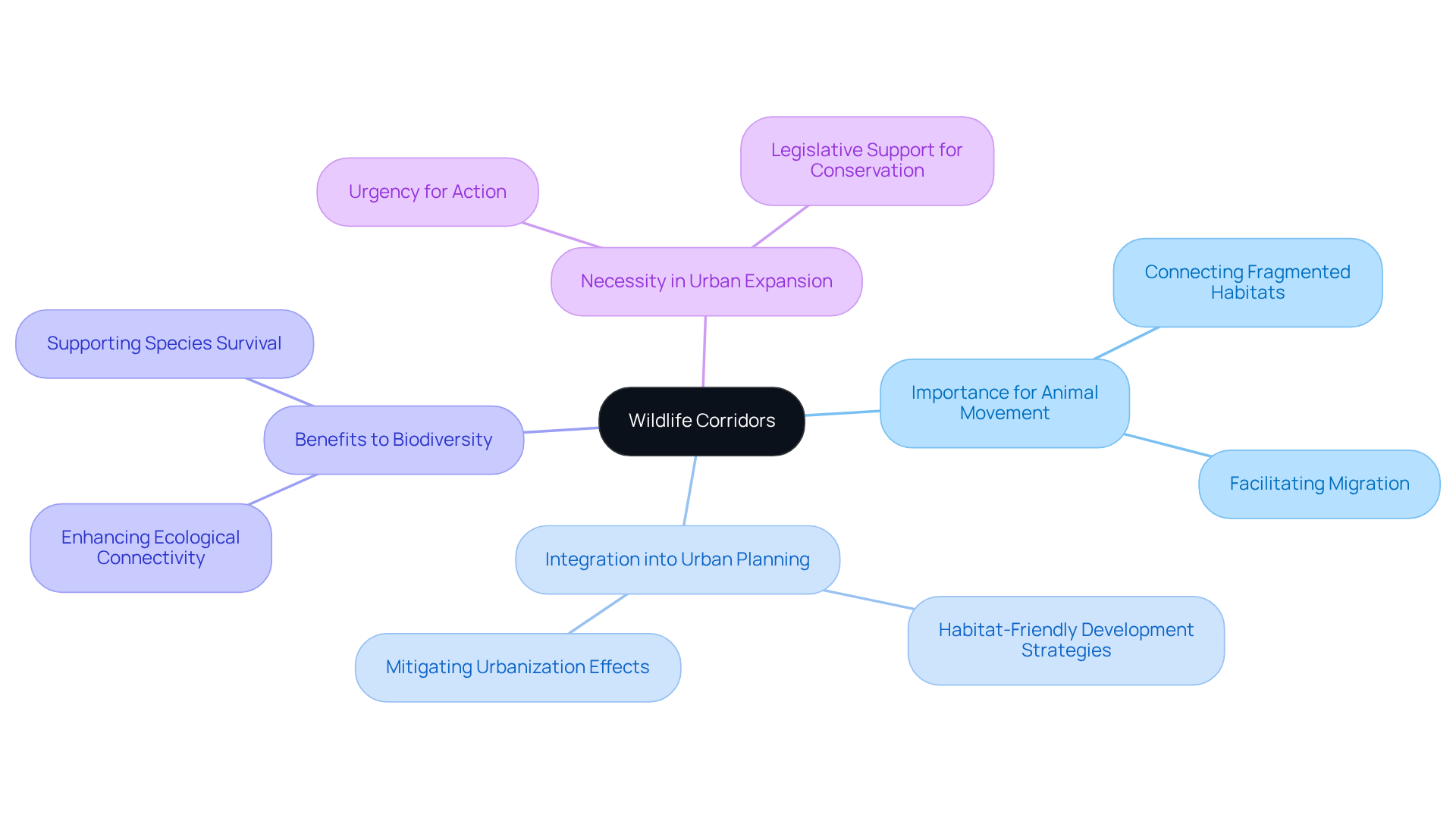
Implement Sustainable Water Management: Protect Aquatic Ecosystems
Implementing sustainable water management practices is essential for safeguarding aquatic ecosystems. Techniques such as:
- Rainwater harvesting
- Greywater recycling
- The use of permeable surfaces
play a crucial role in significantly reducing runoff and pollution. By prioritizing habitat-friendly development strategies, developers not only contribute to the health of local waterways but also ensure that aquatic habitats remain vibrant and resilient. The benefits are clear: a commitment to sustainable water management leads to healthier ecosystems and a more sustainable future.
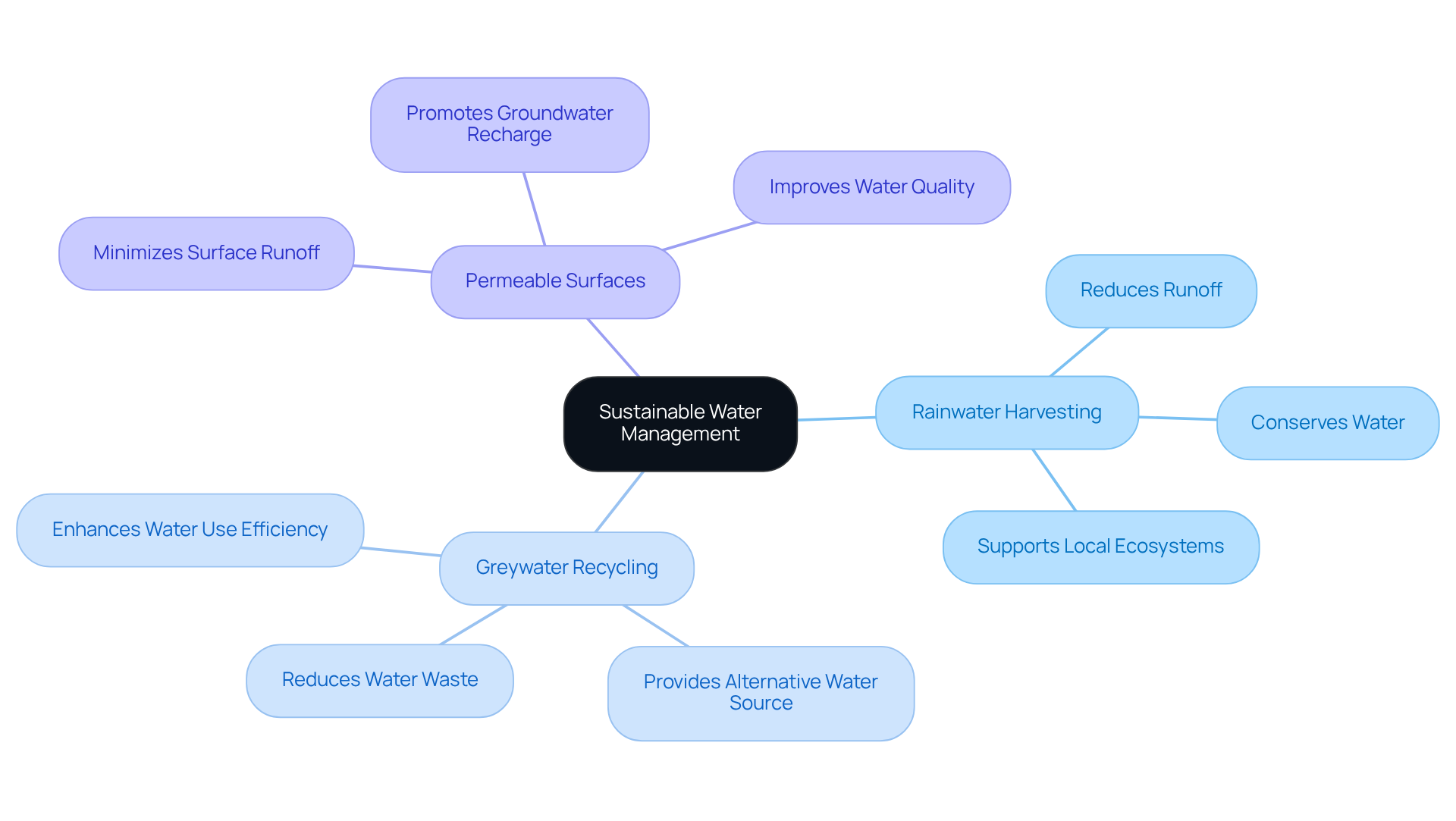
Adopt Responsible Waste Management: Reduce Environmental Footprint
Implementing responsible refuse management practices is crucial for minimizing the environmental footprint of development projects. This involves strategies such as recycling, composting, and reducing refuse creation at the source. By adopting effective management plans for refuse, developers can significantly decrease the amount of material sent to landfills, conserve resources, and promote a circular economy.
Methods like recycling, composting, and reduction at the source play a pivotal role in this effort. In 2018, approximately 69 million tons of municipal solid material (MSM) were recycled, while 25 million tons were composted, resulting in a combined recycling and composting rate of 32.1%. This statistic reflects ongoing efforts to enhance refuse management practices and underscores the potential for developers to markedly lessen landfill contributions.
Recycling and composting not only redirect materials from landfills but also preserve valuable resources, fostering a circular economy. For example, the recycling of construction and demolition (C&D) materials can lower project costs and create job opportunities in recycling industries. Notably, demolition accounts for more than 90 percent of total C&D debris generation, emphasizing the need for targeted recycling initiatives in this sector.
Successful recycling and composting initiatives have proven effective in reducing environmental footprints. Deconstruction practices, which involve meticulously dismantling buildings to salvage materials, maximize resource recovery and minimize excess waste. Such approaches not only conserve resources but also stimulate local economic activities related to the manufacturing or reprocessing of salvaged materials.
By implementing habitat-friendly development strategies, builders can contribute to a more sustainable future, aligning with the increasing emphasis on ecological responsibility in community planning. As the EPA indicates, "The total production of municipal solid refuse (MSR) in 2018 was 292.4 million tons," making efficient disposal management essential for minimizing the overall environmental impact of construction initiatives. To adopt responsible waste management practices, developers should consider integrating recycling programs for specific materials, such as paper and paperboard, which constituted approximately 67 percent of the total recycled MSW in 2018.
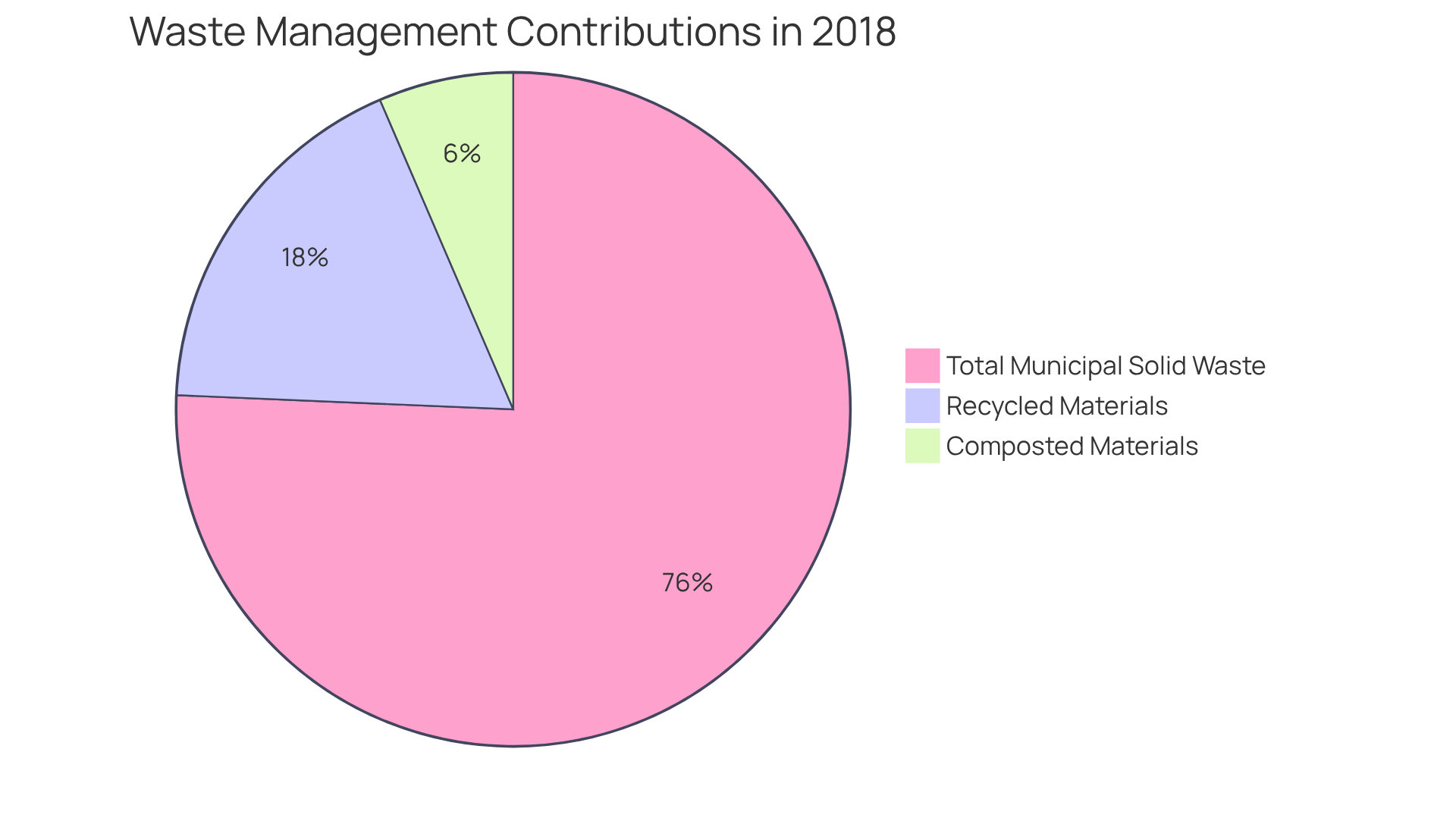
Utilize Renewable Energy: Support Sustainable Development Goals
Utilizing renewable power sources such as solar, wind, and geothermal is essential for promoting sustainable objectives. By integrating these power systems into development initiatives, organizations can significantly reduce their carbon footprints and lessen reliance on fossil fuels. This transition not only promotes environmental sustainability but also strengthens resource security and resilience against climate change.
Consider the economic feasibility of solar energy: once a solar panel is set up, power becomes free, making it a sound choice for long-term projects. The integration of renewable power technologies has been demonstrated to lower pollution and healthcare expenses while fostering economic growth, particularly in underprivileged communities.
Experts emphasize that transitioning to renewable sources is not merely advantageous; it is essential. Supporters assert that the future lies in green alternatives and sustainability. The urgency of shifting to renewable sources cannot be overstated, as it is crucial in combating climate change and reducing carbon footprints.
Successful applications of solar and wind energy in construction initiatives have proven their efficiency in creating habitat-friendly development strategies that align with both ecological and financial goals. As Van Jones articulates, "We want to build a green economy strong enough to lift people out of poverty and into great careers for America’s children.
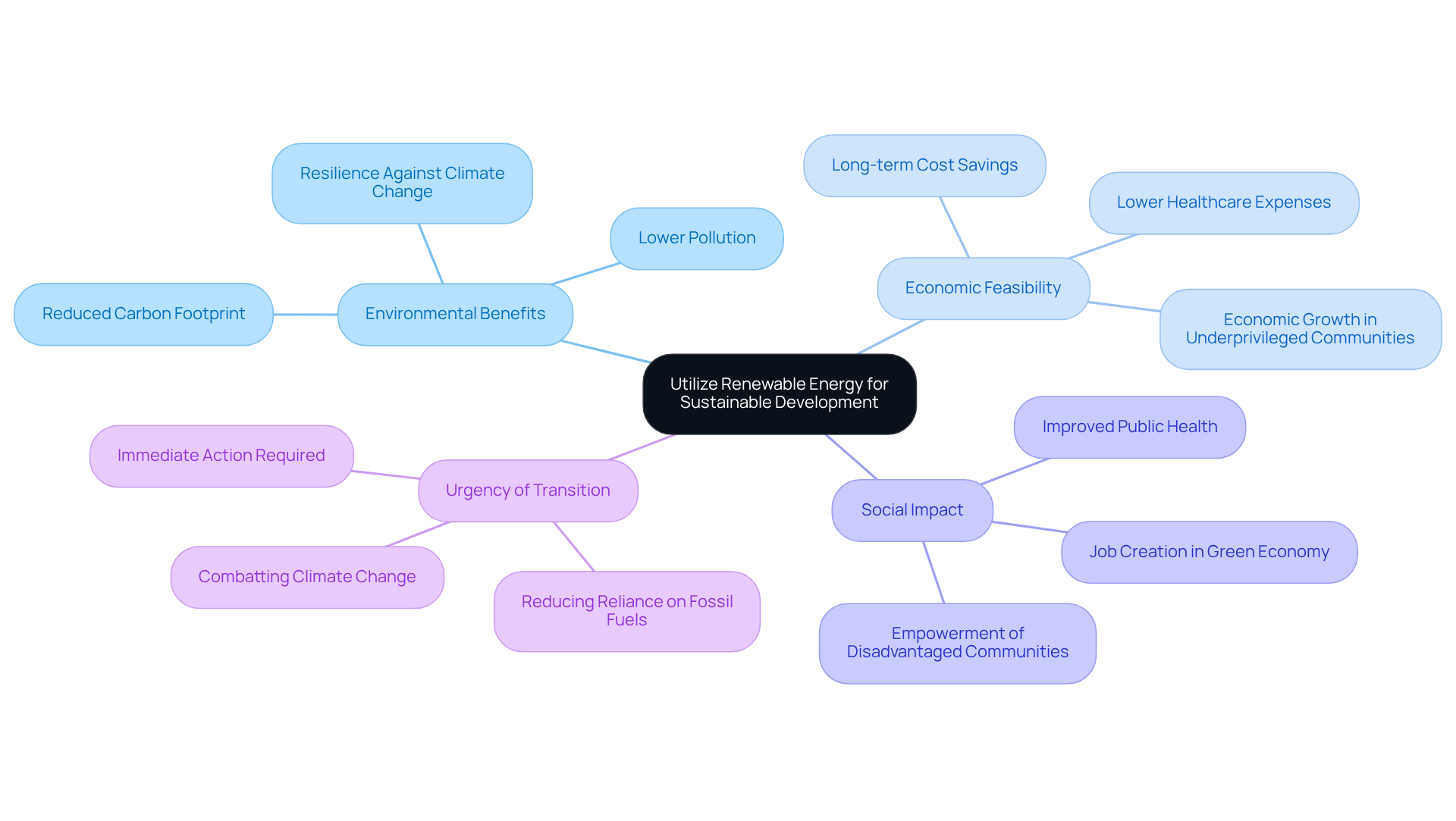
Engage Local Communities: Foster Collaborative Development Efforts
Engaging local communities in the development process is crucial for fostering collaborative efforts and ensuring that initiatives resonate with community needs. How can we effectively achieve this? Through public consultations, workshops, and consistent communication, developers can forge strong connections with community members. This engagement not only builds trust but also allows for the collection of valuable insights. Consequently, initiatives crafted with community input are far more likely to gain acceptance and support from the local population.
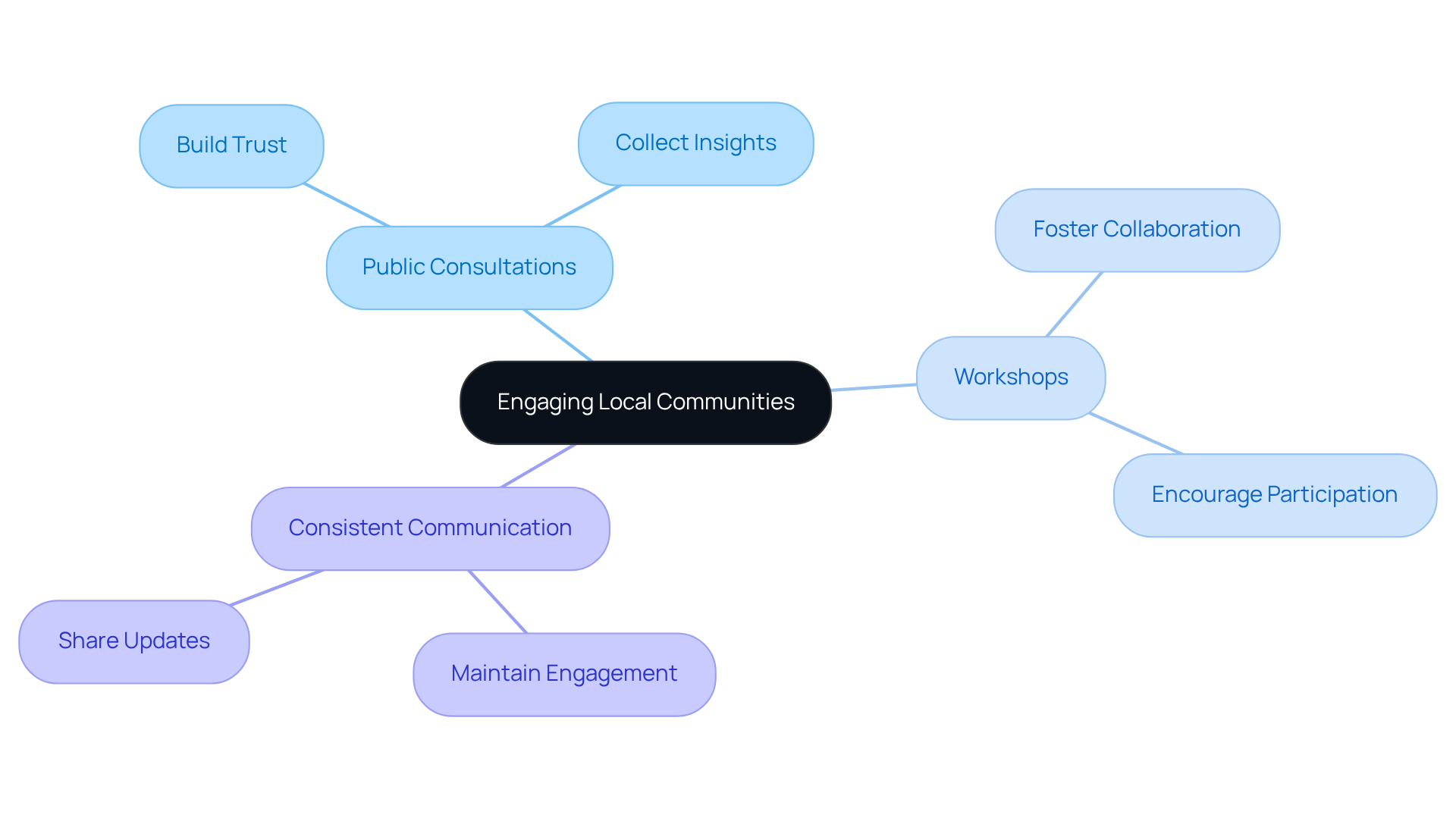
Adopt Green Building Practices: Enhance Energy Efficiency
Adopting sustainable building methods is essential for enhancing efficiency in construction endeavors. Sustainable materials not only reduce the environmental footprint but also improve the overall performance of buildings. For example, green buildings can achieve energy consumption reductions of 30% to 40% compared to traditional structures, leading to a decrease in CO2 emissions by up to 35%. Furthermore, optimizing building orientation to maximize natural light and incorporating energy-efficient systems can significantly lower utility costs.
Workers in green buildings report 30% fewer symptoms of 'sick building syndrome' and have 6% higher sleep scores on average, establishing a clear link between occupant health and building design. These strategies contribute to a healthier environment and lead to substantial financial benefits. New green buildings experience an average operating cost savings of 10.5% in their first year and a 16.9% reduction over five years.
While implementing habitat-friendly development strategies may incur costs of 1-12% more than traditional methods, emphasizing these approaches enables developers to create projects that are both financially viable and environmentally conscious. Ultimately, this promotes a sustainable future by encouraging developers to embrace habitat-friendly development strategies for the benefit of both their projects and the planet.
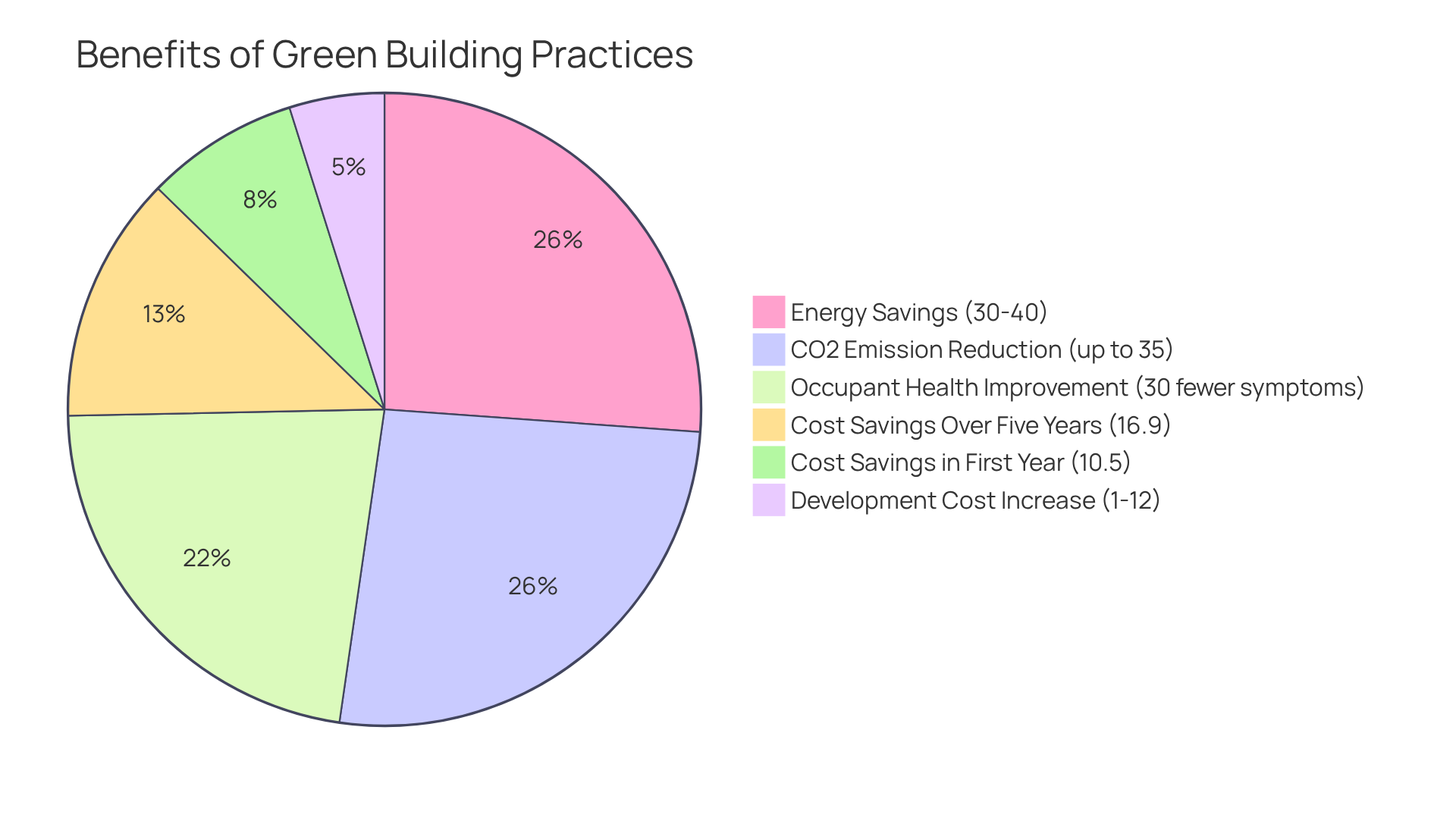
Prioritize Habitat Restoration: Revitalize Local Ecosystems
Focusing on habitat restoration is essential for rejuvenating local ecosystems affected by construction. Initiatives such as reforestation and wetland restoration not only enhance biodiversity but also improve ecosystem services, which are vital for community resilience.
For instance, forests in the eastern United States have been shown to cool land surfaces by 1 to 2 degrees Celsius annually, with this cooling effect extending up to 300 meters (984 feet) away from forested areas, significantly mitigating the effects of climate change. Additionally, the restoration of wetlands can result in enhanced vegetation health and better water quality, as demonstrated by successful initiatives such as the installation of artificial beaver dams (ABDs) that have elevated water levels and encouraged riparian growth.
As Mallory Barnes, an Environmental Scientist at Indiana University, noted, "It’s all about figuring out how much forests can cool down our environment and the extent of the effect."
By investing in these habitat restoration efforts, developers can implement habitat-friendly development strategies that foster healthier environments, support local wildlife, and contribute to sustainable community enhancement. Strategies such as removing invasive species and implementing habitat-friendly development strategies can further amplify these benefits, ensuring that initiatives align with ecological preservation goals.
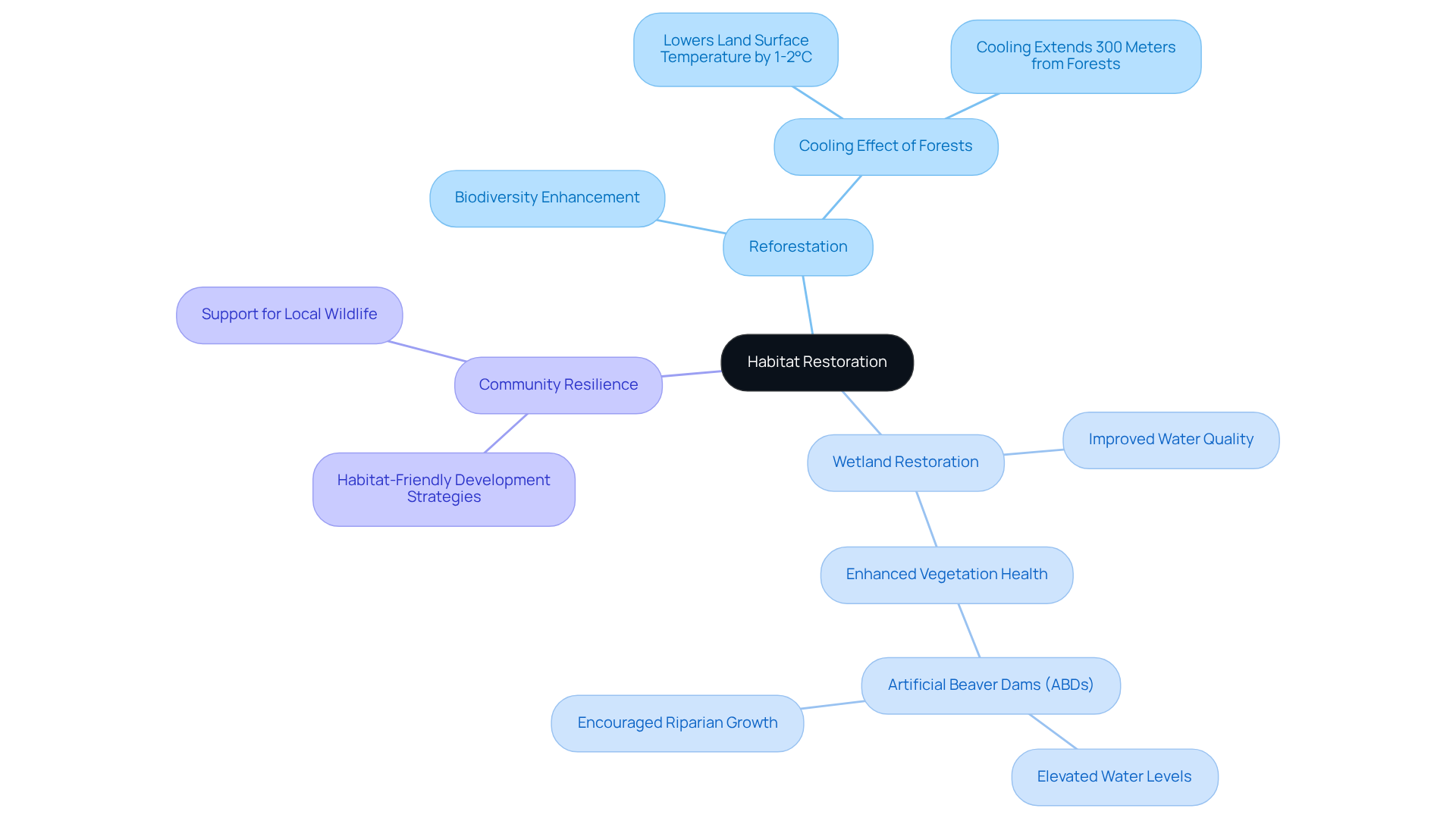
Conduct Ongoing Impact Assessments: Ensure Long-Term Habitat Sustainability
Ongoing impact assessments are crucial for ensuring long-term habitat sustainability. These assessments reveal potential negative impacts of development on local ecosystems, providing essential data for informed decision-making. By consistently evaluating the effects of their initiatives, developers can adjust their habitat-friendly development strategies to mitigate harm and enhance the ecological integrity of the regions they develop. This proactive approach not only conserves biodiversity but also aligns with sustainable development goals, ensuring that future generations inherit a healthier environment.
Environmental Impact Assessments (EIAs) are pivotal in this process, as they evaluate impacts on land, water, air, and biological diversity. Such assessments help reduce resource exploitation and promote biodiversity conservation. As Carl Sagan emphasized, we must take action to protect the environment for future generations. By adhering to best practices in conducting EIAs—such as engaging in stakeholder consultations and implementing mitigation measures—developers can ensure their projects are aligned with habitat-friendly development strategies that contribute positively to habitat sustainability.
In conclusion, the integration of ongoing impact assessments into habitat-friendly development strategies is not just beneficial; it is essential for the protection of our environment and the legacy we leave behind.
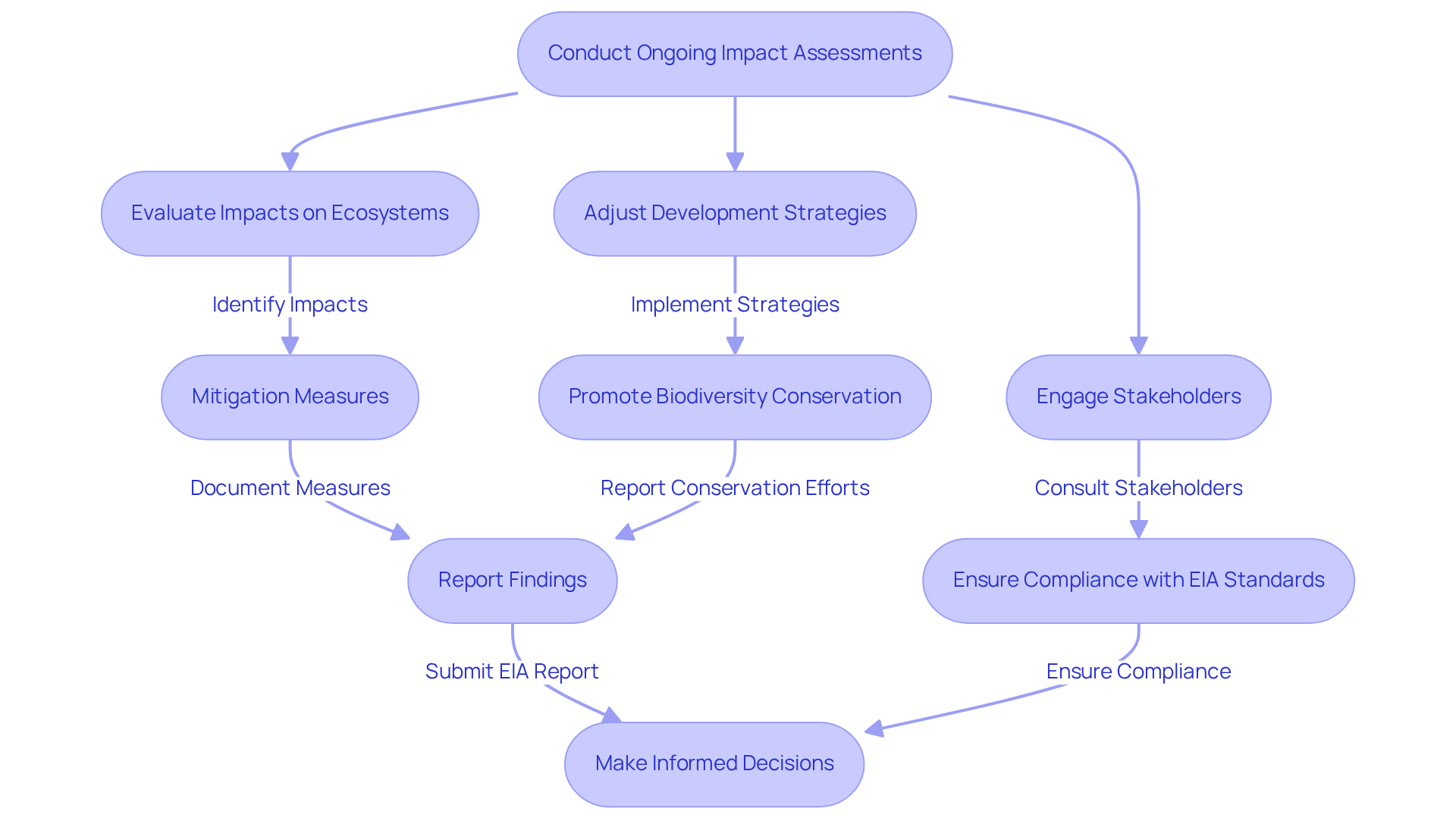
Conclusion
The significance of habitat-friendly development strategies is paramount in today’s landscape of environmental sustainability and community well-being. By integrating practices that prioritize ecological balance, developers can create projects that not only comply with regulations but also enhance the quality of life for both humans and wildlife. This comprehensive approach ensures that development efforts positively impact local ecosystems while addressing the increasing demand for sustainable solutions.
Various strategies have been highlighted, including:
- the incorporation of native vegetation
- the establishment of wildlife corridors
- the implementation of sustainable water management practices
Each of these strategies is crucial in fostering biodiversity, protecting aquatic ecosystems, and minimizing the overall environmental footprint of construction projects. Furthermore, engaging local communities and adopting green building practices significantly enhances the effectiveness of these initiatives, ensuring they align with the population's needs while promoting energy efficiency and resource conservation.
Ultimately, the call to action is unequivocal: adopting habitat-friendly development strategies is not merely an option but a necessity for the future. By prioritizing these practices, developers can lead the charge towards a more sustainable and resilient world, where the health of our ecosystems is preserved, and communities flourish. The integration of these strategies into development projects is vital for creating a legacy of environmental stewardship that future generations can inherit and build upon.
Frequently Asked Questions
What is Harbinger Land known for?
Harbinger Land is known for providing comprehensive solutions for habitat-friendly land acquisition, particularly in infrastructure and utility projects, addressing complexities such as legal and regulatory hurdles.
What services does Harbinger Land offer?
Harbinger Land offers services including site and right-of-way acquisition, title research, GIS mapping, and data processing.
How does Harbinger Land incorporate technology in its services?
Harbinger Land leverages advanced technology, such as AI-powered title research software, to streamline land acquisition processes while ensuring environmental responsibility.
Who are the primary clients of Harbinger Land?
The primary clients of Harbinger Land include natural gas companies, solar developers, and municipalities, all of whom benefit from habitat-friendly development strategies.
What is the significance of incorporating native vegetation in development?
Incorporating native vegetation enhances local biodiversity, provides critical habitats for wildlife, supports pollinators, and requires less water and maintenance compared to non-native species.
What are the ecological pillars supported by native vegetation?
The ecological pillars supported by native vegetation include establishment (planting/nesting), resource acquisition (feeding), and the diversity of ecosystem levels.
How can developers effectively implement native vegetation strategies?
Developers can effectively implement native vegetation strategies by conducting site assessments to identify appropriate native species and collaborating with local ecological experts.
Why are wildlife corridors important in urban planning?
Wildlife corridors are important as they facilitate safe animal movement, connect fragmented habitats, and allow wildlife to access critical resources, thus preserving biodiversity.
What impact do wildlife corridors have on urban ecosystems?
Wildlife corridors enhance biodiversity and promote ecological connectivity, enabling species to thrive despite the challenges posed by urbanization and infrastructure expansion.
What is the overall goal of habitat-friendly development strategies?
The overall goal of habitat-friendly development strategies is to meet regulatory requirements while promoting environmental sustainability and community development.
List of Sources
- Harbinger Land | Comprehensive Solutions for Habitat-Friendly Land Acquisition
- 100+ inspirational and powerful quotes on Sustainability (clustered by topic) - Twenty Now (https://twentynow.com/sustainability-initiatives/sustainability/100-inspirational-and-powerful-quotes-on-sustainability-clustered-by-topic)
- The Executive Headlines - Top business magazine & news headlines sources (https://executiveheadlines.com/erp/quotes-on-sustainable-energy)
- 60 Quotes About the Future of Renewable Energy (https://deliberatedirections.com/renewable-energy-quotes)
- 20 Quotes To Get You Inspired For a Renewable Future - Solstice (https://solstice.us/solstice-blog/20-quotes-for-a-renewable-future)
- 20 Insightful and Inspiring Quotes About Sustainability (https://jerseygirlorganics.co.nz/post/20-insightful-and-inspiring-quotes-about-sustainability)
- Incorporate Native Vegetation: Enhance Biodiversity in Development
- Biodiversity-friendly practices to support urban nature across ecosystem levels in green areas at different scales (https://sciencedirect.com/science/article/pii/S1618866725000160)
- Establish Wildlife Corridors: Promote Safe Animal Movement
- A new, important wildlife corridors bill (https://environmentamerica.org/articles/a-new-important-wildlife-corridors-bill)
- Tribes, Tourism, and Sustainability: A case study from Mudumalai Tiger Reserve, Tamil Nadu, India - The International Partnership for the Satoyama Initiative (IPSI) (https://satoyamainitiative.org/case_studies/tribes-tourism-and-sustainability-a-case-study-from-mudumalai-tiger-reserve-tamil-nadu-india)
- Implement Sustainable Water Management: Protect Aquatic Ecosystems
- 25 Best Quotes On Save Water & Water Conservation (https://blog.kritsnam.com/25-best-quotes-on-save-water-water-conservation)
- Water and Sanitation - United Nations Sustainable Development (https://un.org/sustainabledevelopment/water-and-sanitation)
- ReNutriWater: A Circular Approach to Water Management (https://environment.ec.europa.eu/news/renutriwater-circular-approach-water-management-2025-02-10_en)
- Adopt Responsible Waste Management: Reduce Environmental Footprint
- Sustainable Management of Construction and Demolition Materials | US EPA (https://epa.gov/smm/sustainable-management-construction-and-demolition-materials)
- National Overview: Facts and Figures on Materials, Wastes and Recycling | US EPA (https://epa.gov/facts-and-figures-about-materials-waste-and-recycling/national-overview-facts-and-figures-materials)
- Statistics Explained (https://ec.europa.eu/eurostat/statistics-explained/index.php/Waste_statistics)
- Utilize Renewable Energy: Support Sustainable Development Goals
- 50 Renewable Energy Quotes Inspiring A Greener Future (https://trvst.world/renewable-energy/renewable-energy-quotes)
- The Executive Headlines - Top business magazine & news headlines sources (https://executiveheadlines.com/erp/quotes-on-sustainable-energy)
- 70 Inspiring Climate Change and Sustainability Quotes (https://moralfibres.co.uk/70-inspiring-climate-change-and-sustainability-quotes-to-motivate-influence)
- Engage Local Communities: Foster Collaborative Development Efforts
- Analyzing Online Community Stats: 44 Takeaways for 2021 | Higher Logic (https://higherlogic.com/blog/online-communities-facts-statistics-2021)
- Case Studies - Health and Social Care Alliance Scotland (https://alliance-scotland.org.uk/blog/case_studies)
- 20 Stats Proving Corporate Volunteerism's Value (https://volunteerhub.com/blog/20-corporate-volunteerism-statistics)
- 40+ Essential Online Community Stats for 2025 | Bettermode Insights (https://bettermode.com/blog/online-community-stats)
- Adopt Green Building Practices: Enhance Energy Efficiency
- Green Building Statistics (https://rubyhome.com/blog/green-building-stats)
- Prioritize Habitat Restoration: Revitalize Local Ecosystems
- A century of reforestation helped keep the eastern US cool (https://news.agu.org/press-release/a-century-of-reforestation-helped-keep-the-eastern-us-cool)
- Assessing the effectiveness of riparian restoration projects using Landsat and precipitation data from the cloud-computing application ClimateEngine.org (https://sciencedirect.com/science/article/pii/S0925857418302374)
- Conduct Ongoing Impact Assessments: Ensure Long-Term Habitat Sustainability
- The Importance of Environmental Impact Assessments in Development (https://corpseed.com/knowledge-centre/importance-of-environmental-impact-assessments-in-development)
- 15 Inspirational Quotes On The Environment | EcoMENA (https://ecomena.org/inspirational-quotes-environment)
- 20 Insightful and Inspiring Quotes About Sustainability (https://jerseygirlorganics.co.nz/post/20-insightful-and-inspiring-quotes-about-sustainability)




